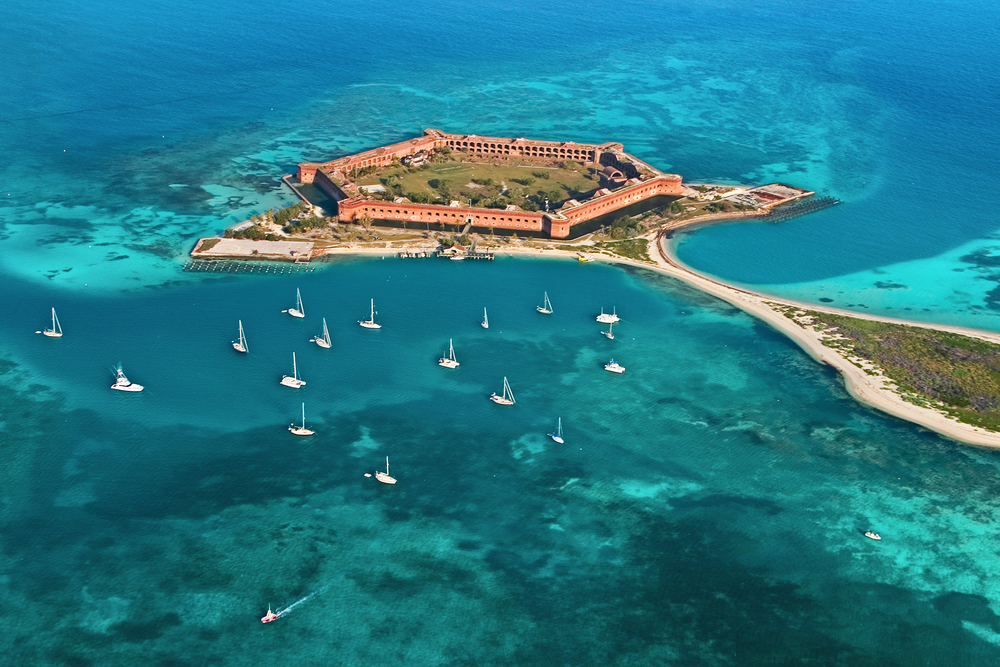My wife and I enjoy visiting national parks and recently had the opportunity to visit Dry Tortugas National Park in Florida. We live in Orlando, and while it may seem like this should have been in our backyard, Dry Tortugas is incredibly remote. Nestled 68 miles west of Key West, Florida, this remote archipelago has a storied history dating back to the 19th century. The Spanish explorer Ponce de León named it “Dry Tortugas” for its lack of freshwater and abundance of sea turtles, setting the stage for a destination brimming with historical intrigue.
Dry Tortugas is unique, and getting there is also a bit of a unique experience. There are a few options: ferry, private boat, or sea plane. We decided to take the ferry from Key West. The ferry, named the Yankee Freedom, is a high-speed catamaran that runs to and from the park each day. However, there are only 10 spots reserved a day for campers who would like to stay on Dry Tortugas overnight. Because of this limited number of space, there is currently an 18-month wait list to camp on Dry Tortugas.
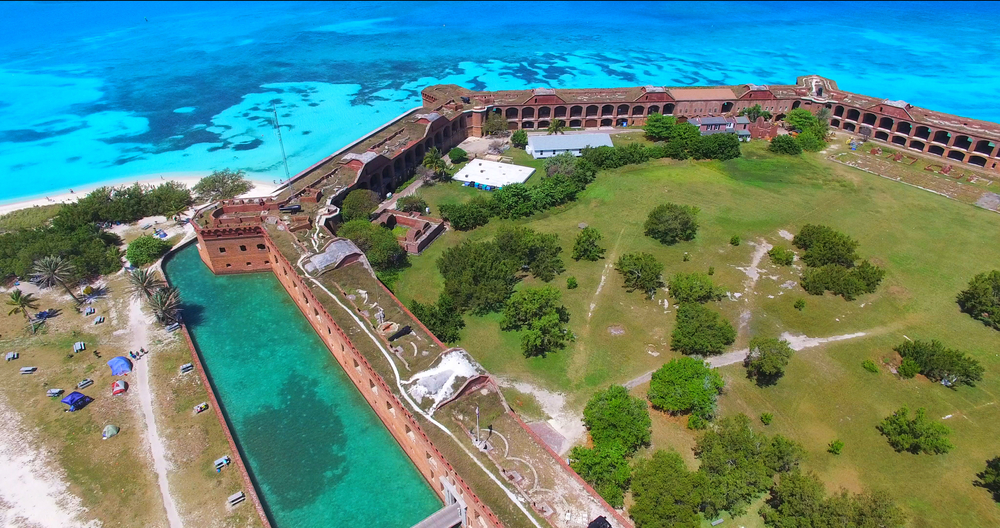
We found that the experience on Dry Tortugas was well worth the wait. The natural beauty is nothing short of mesmerizing. The centerpiece, Fort Jefferson, surrounded by crystal-clear waters and vibrant coral reefs, offered a completely different dimension than what I typically think of when I think of National Parks.
Our journey to Dry Tortugas began with a day in the vibrant Key West. The Shipwreck Museum provided a captivating glimpses into the maritime salvage history of the island. I had no idea that Key West was as old as it was, but the plantation style houses spoke to the true nature of this island. Indulging in Key Lime pie, we soaked in the island’s rich culture and history. The following day, anticipation fueled our excitement as we boarded the Yankee Freedom ferry, eager to uncover the mysteries of Dry Tortugas.
The journey to the island was calm and beautiful. We soon found that camping on Dry Tortugas presents a unique and unparalleled experience, offering solitude on an island that feels worlds away from the hustle and bustle of everyday life. With no freshwater source on the island, the need to pack all our essentials (including freshwater) brought a sense of self-sufficiency. Proper preparation is key, including knowing the type of fuels that you can bring (solid fuels like charcoal or Sterno gel only). Make sure to do your research on the park service website and ferry website before leaving home.
Fort Jefferson was stunning and left us in awe with its architectural grandeur. It is an imposing coastal fortress constructed of red bricks whose original purpose was to serve as a naval station to safeguard American interests in the Gulf of Mexico. Cannons, millions of bricks, over 2,000 arches, a moat…this place is something to see.
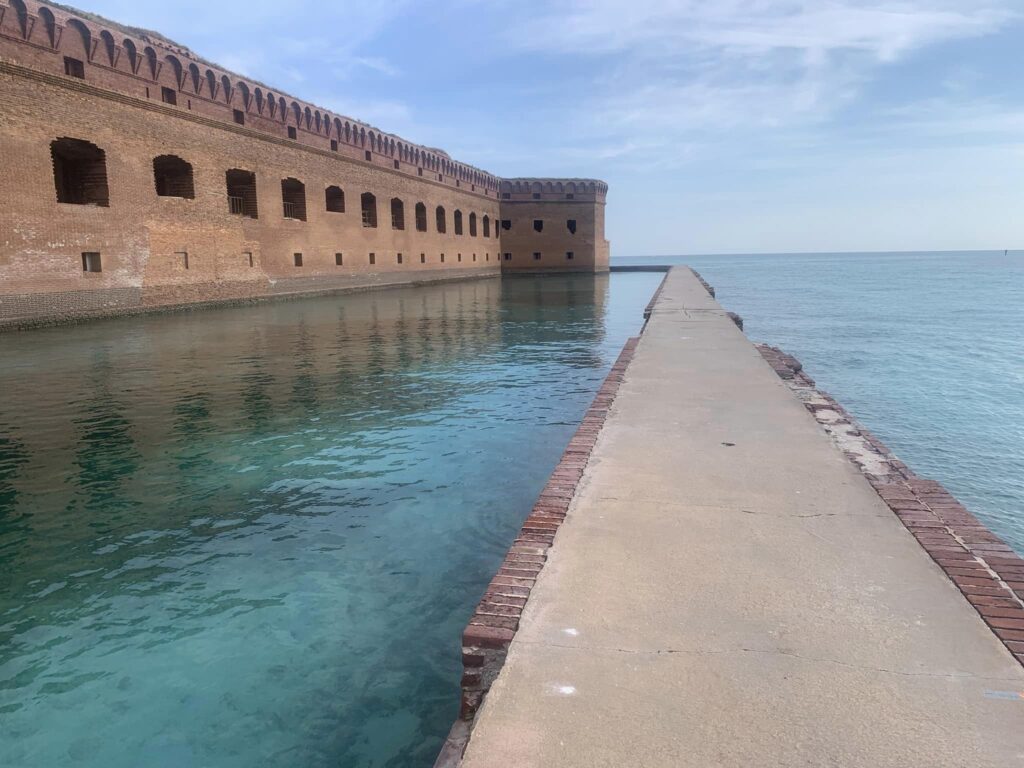
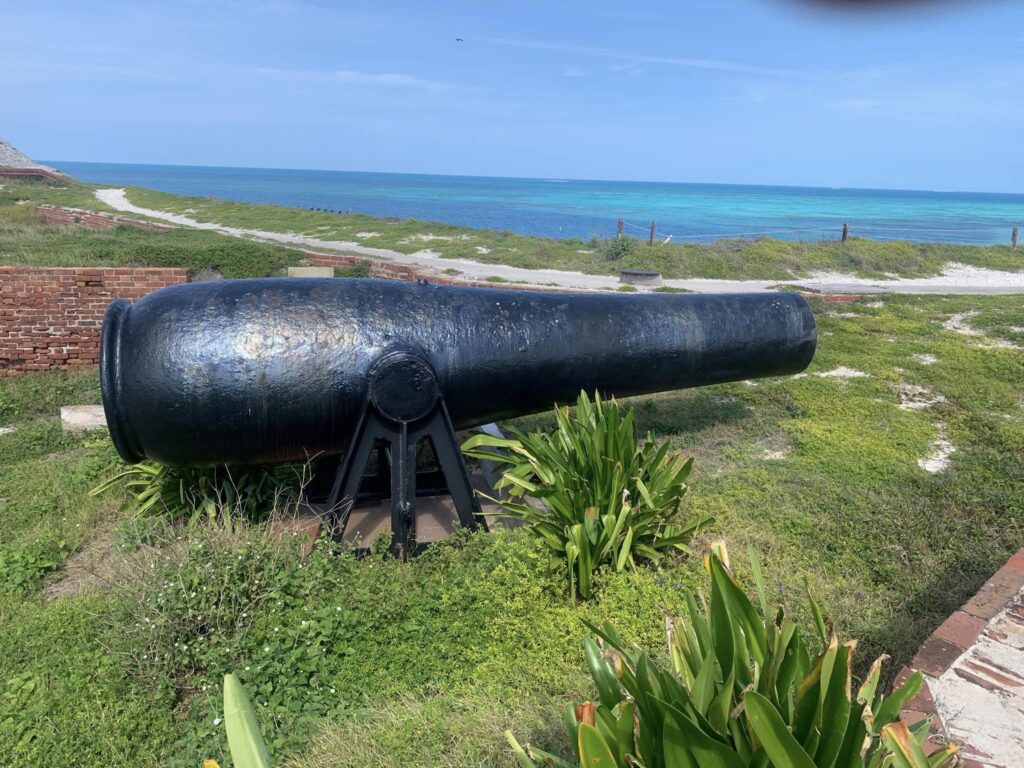
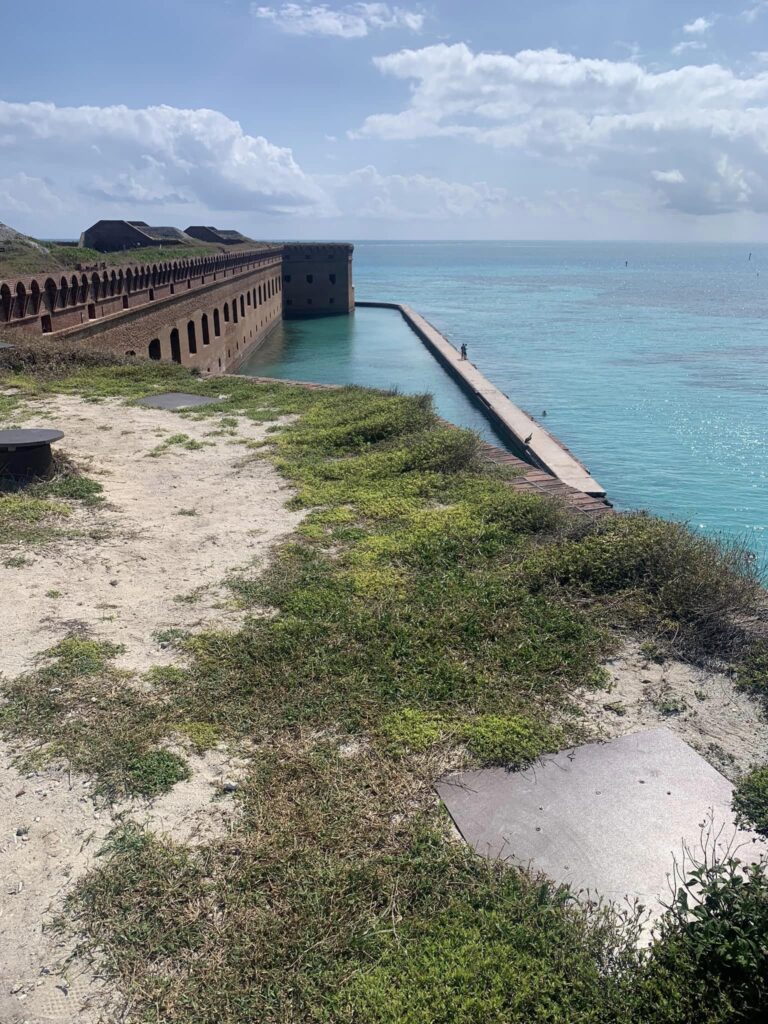
Construction began in 1846, but was never completed, and the fort never saw direct combat. The purpose of the fort was transformed during the Civil War into a Union prison, before later being abandoned and eventually being protected by the National Park Service.
As we meandered through the expansive courtyard in the fort, we were pleasantly surprised by the presence of lush green spaces and trees, providing a stark contrast against the fort’s imposing red walls. We were also charmed by the large number of hermit crabs making their way through the campgrounds. The nights brought a different ambiance, offering the opportunity to stroll around the fort’s perimeter under the certified dark sky. During one such night walk, we encountered a sea turtle gracefully gliding through the moat, adding an extra layer of wonder to our experience.
Undoubtedly a highlight of our trip, snorkeling around Dry Tortugas unveiled a mesmerizing underwater world. The coral reefs beneath the clear waters showcased a kaleidoscope of colors, with barracudas and an array of vibrant fish darting through the intricate formations. The brain coral, with its delicate and fascinating patterns, served as a testament to the delicate balance of the underwater ecosystem. The experience left us in awe of the park’s biodiversity and the interconnectedness of its marine life. It also made me appreciate how lucky we are in America to have such a diverse array of parks in the National Park Service.
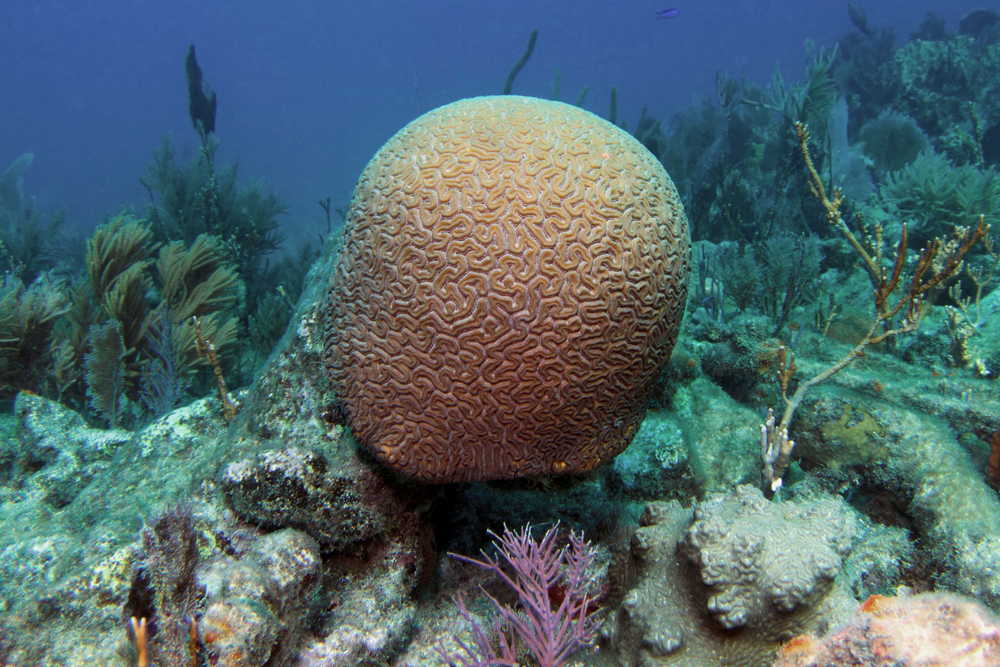
Our visit was blessed with mostly favorable weather, featuring clear and sunny days that highlighted the beauty of the surroundings. However, the last day presented a dramatic change with rain and wind, offering a unique perspective on the park’s resilience in the face of changing weather patterns. The boat ride back on the ferry, though rough due to the sudden weather shift, provided spectacular views of Dry Tortugas from a different angle. For those prone to motion sickness, we highly recommend carrying Dramamine to ensure a more comfortable journey.
For those with the luxury of time, camping on Dry Tortugas is highly recommended. Allocate one day to immerse yourself in the history of Fort Jefferson and explore the island’s natural beauty. Another day can be dedicated to snorkeling and swimming, allowing you to fully appreciate the captivating underwater landscapes. The exclusive experience of camping on this secluded island is a rare opportunity to connect with nature on a profound level, far removed from the hustle of everyday life. If you take a day trip on the ferry, you really only have about 4 hours to view the fort and the surrounding water, so I would recommend camping and giving yourself a little bit more time if you can.
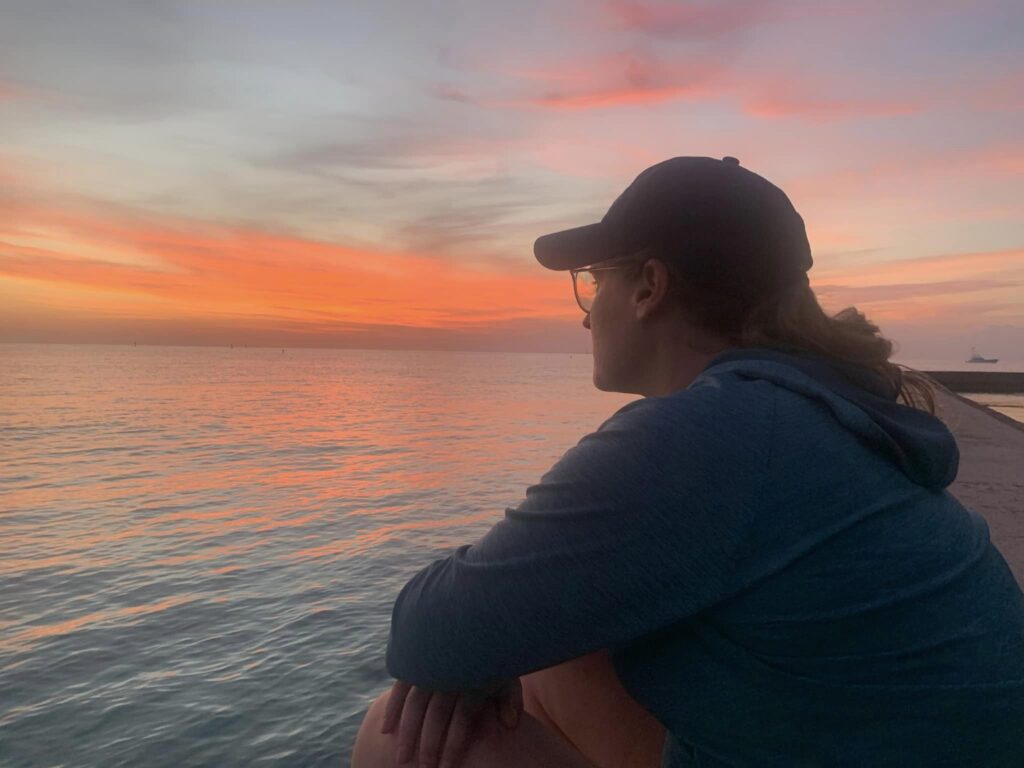
Our journey to Dry Tortugas National Park was an enchanting odyssey through history, nature, and solitude. From the intriguing stories echoing within Fort Jefferson to the vibrant underwater landscapes, the island left an indelible impression on us. Dry Tortugas is not merely a national park; it is a sanctuary where history and nature entwine, offering a unique and immersive experience for those willing to embark on the journey to this remote paradise.
